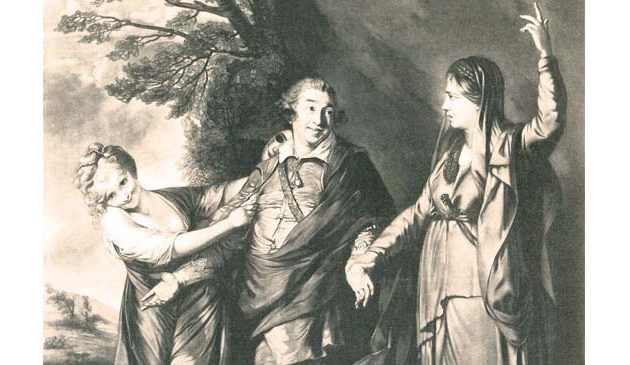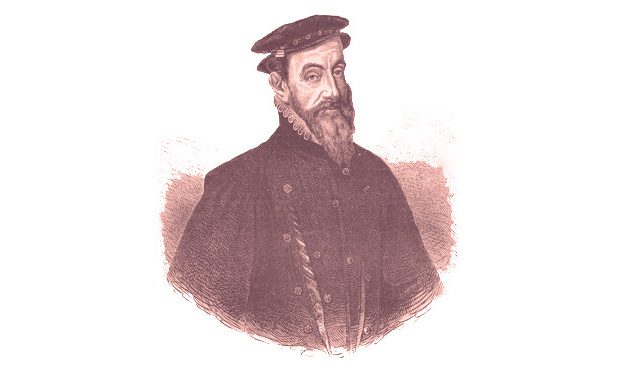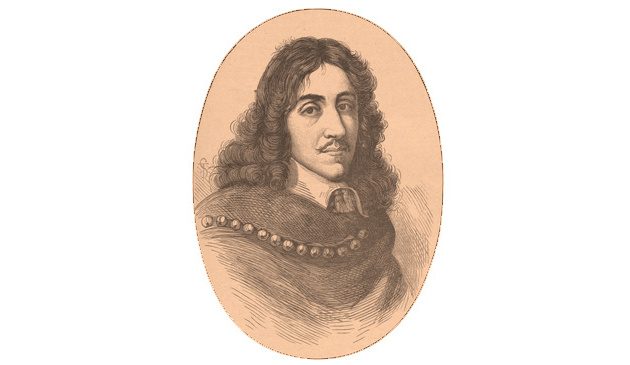Vauxhall Gardens and Jonathan Tyers

This is the scene confronting visitors as they arrived through the narrow hallway of the Proprietor’s House into Vauxhall Gardens. The Grand Walk stretches into the distance, a globe lamp hanging from each tree. On the right is the Grove, with the tall structure of the Orchestra, which was rebuilt in this style for the 1758 season. In the distance is a two dimensional tromp l’oeil wooden obelisk decorated by Francis Hayman. Part of the statue of Handel can be seen on the far right.
Westminster Bridge opened in 1750. Tyers then purchased land at Lambeth to provide a coachway to make a convenient route from the southern end of the bridge to Vauxhall. So many people took the opportunity that on the first night of the season carriages were backed up for half a mile.
In that same year the Pillared Saloon was built as an extension of the Rotunda and provided additional wall space to hang paintings. In about 1761 the newly married King George III and Queen Charlotte, as a favour to Tyers following a visit to the gardens, sat for full-length portraits, probably by Hayman. These two paintings, each about 12 feet high, were hung either side of a door in the Saloon. At about the same time three triumphal arches were erected along the South Walk.
A major attraction that excited much attention was added for 1752, which was the Cascade. Curtains were pulled back at a fixed time each evening to reveal for about 10 minutes what appeared to be a waterfall but was actually an illusion, created by sheets of tin fixed to moving belts. It was said that Tyers created it to go one better than a similar cascade used the previous year by his friend David Garrick at the Drury Lane theatre. The Cascade was gradually improved and enlarged during the following 90 years or more.
To entice visitors, each year between 1761 and 1764 Hayman produced one large-scale painting for Vauxhall on a theme of the then-current Seven Years War. The four patriotic, crowd-pleasing works of propaganda were intended to show British military success, mastery of the seas, and magnanimity. The most successful of the four were the first, which depicted the surrender of Montreal to General Amherst after the defeat of the French, an action that had only taken place eight months earlier, and the third, of Robert Clive’s victory at the Battle of Plessy that gave the East India Company control of a large part of India.
Tyers delighted in the company of intelligent and like-minded men. He established what his musician friend Charles Burney described as “a kind of club of Wits” that included libertarians, poets, scholars, and writers. In 1757 Tyers was elected to the Society of Arts that had been founded three years earlier, where he would have known many of London’s artists, including Joshua Reynolds.
Vauxhall Gardens consisted of the two areas of land that Tyers had originally leased. By the 1750s he had the capital to purchase the copyhold of each and thus became the head lessee. He also built up an extensive portfolio of properties around Kennington and Lambeth and farmland near Dorking.
Jonathan Tyers died in the Proprietor’s House at Vauxhall in June 1767 aged 65 and was buried at Bermondsey. An epitaph written in his memory began: “Here sleeps the Master Builder of Delight…”. The anniversary of his death was thereafter commemorated annually at Vauxhall Gardens with the playing of the Dead March from Handel’s Saul.
Vauxhall Gardens was inherited by Jonathan’s wife, Elizabeth, and continued to be managed for some years by their son Jonathan. Thomas Arne continued as musical director for many years. The ownership of the gardens remained in the Tyers family until the 1820s.
The gardens gained a significant advantage with the opening of Vauxhall Bridge in 1816, providing a much easier journey from London. They experienced a second golden age in the Regency period when the Prince Regent was a regular visitor, and in the 1820s still remained London’s leading outdoor attraction.
Audiences of the 19th century sought other kinds of entertainment, however, and by the 1830s the cost of staging new attractions became greater than the income. London had also expanded by then and the gardens were no longer in an appealing rural setting. Vauxhall had become a less than salubrious district of manufacturing and cheap housing. Any remaining charm must been lost when the South Western Railway line into Waterloo, built high on a viaduct in 1848, passed between the gardens and the river.
Significantly, London’s major attraction of 1851 was the Great Exhibition in Hyde Park, following which the Crystal Palace leisure park opened at Sydenham in 1854. Vauxhall Gardens went through a succession of different owners until finally closing in July 1859 with a series of farewell evenings.
The site at Vauxhall was sold the following month and built over. In the 1930s various streets of the new Vauxhall Gardens Estate were named after people and places associated with the old venue. There was significant bomb-damage during the Second World War and thereafter much of the site became a community park. Jonathan Street, Tyers Street, and Tyers Terrace today surround the site of the Vauxhall Gardens park.
Sources include: David Coke & Alan Borg ‘Vauxhall Gardens – A History’; Jenny Uglow ‘Hogarth – A Life and a World’; Christopher Hogwood ‘Handel’; Jerry White ‘London in the 18th Century’; Peter Whitfield ‘London – A Life in Maps’; Neville Braybrooke ‘London Green’ (1959); Ian McIntyre, ‘Joshua Reynolds’. With thanks to Hannah Renier (author of ‘Lambeth Past’) for her useful comments.
< Back to London’s Restoration pleasure gardens
< Back to Early Georgian London


